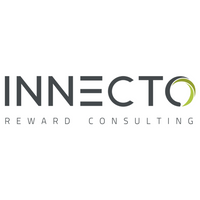Four ways HR can become more agile and strategic

Business leaders know full well the correlation between effective people management and the impact on business success. They understand that paying more attention to their people results in increased productivity and brand advocacy, as well as further innovation in developing products and services.
HR’s role is to measure and track these efforts and their impact. Knowing the right levers to pull to drive the desired change is vital for the whole business to improve.
So much for the theory. But how do HR teams go about this in practice? Here are four key areas of responsibility to consider:
1. Recruitment and selection
Often leaders put forward a business case for increased headcount by showing the impact on business delivery. It’s only possible to realise that benefit if the right individual has been recruited at the right level and into the right role.
Attracting the right talent will be easier if the business openly communicates what it means to work for them and has established a firm baseline to offer the right reward package. Once recruited, the focus needs to shift to managing that hire and tracking if the business benefits are realised.
2. Training and development
One of HR’s key roles is to provide training opportunities, to ensure employees are nurtured and developed along with the expectations of the role. But often during this process we overlook cases where training requirements are not standard for the role – and it’s more about potential and enhancing an employee’s self-worth and growth opportunity. We need to be smarter about leveraging and tracking that spend.
3. Working environment and relations
Managing these is fundamental within any business. Any failure can have significant impact on your reputation and brand, especially in today’s environment of mass communication. Expect employees to quickly highlight weaknesses through social platforms such as Glassdoor and in the press.
Expectations are high but for the most part legislation, business best practice and regulation drive organisations to do the right thing. Whenever there’s a media frenzy about a business, it is either because they are doing something innovative and exciting – think Netflix and Google – or they’ve attracted attention for the wrong reasons, such as Sports Direct and Uber. Doing what is required will avoid costly claims and fines; however, what is harder to quantify is the cost to the business of damaging your brand.
4. Benefits and compensation
Strangely businesses often overlook this area, even though it can create so much discontent and disengagement. As consultants, we know that it’s sometimes tough for HR to get direct investment into establishing a strong reward management approach. The reason for this, apart from the standard hygiene/welfare factors, is a lack of understanding on how reward can leverage business success.
To tackle this, high-impact analytics can be used for ongoing tracking and reporting, or to build a business case for change. Examples of high-impact analytics include:
- Attrition: Cost to the business in productivities, recruitment costs, and culture erosion.
- Bad Hires: Cost to the business in recruiting and losing employees within a period.
- Leaky Bucket: Cost to the business of 'out of cycle' pay increases.
- Ineffective pay distribution: Cost to the business of not addressing a fair application and distribution of reward.
- Flight risk loss: Cost to the business when a low-paid high-performer exits the business. Cost to the business when a good or high-performer peaks in productivity and exits the business.
- Past glories: Cost to the business of retaining highly-paid, low-performing individuals.
- Isolated attrition issue: Cost to the business of loss of department/function productivity and/or performance from significantly high turnover.
- Base Pay/Variable Pay ratio: Identify costs of base to variable ratios out of step with market practice.
- Employee engagement: Benefit to the business, if employee engagement was to increase by X per cent.
The author is Sarah Lardner, client director at Innecto.
This article was provided by Innecto.
Supplied by REBA Associate Member, Innecto Reward Consulting
We have more than 20 years' experience in getting employers' pay and reward working harder for them.







